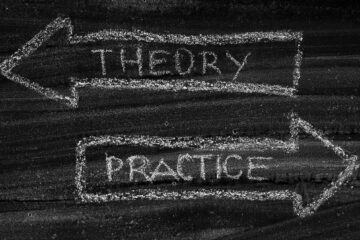Cross-posted from Education Week
You should take a look at Endangering Prosperity: A Global View of the American School, a new book by Eric Hanushek, Paul Peterson and Ludger Woessmann. It does as nice a job as I have seen anyone do of describing the performance of American school children as it compares to the performance of school children in the countries with the best student performance. They demolish the claim that our best students are the equal of the best students anywhere in the world, as well as the claim that our top-performing states are the equals of the top-performing jurisdictions anywhere. And they do an excellent job of showing the reader how the country is paying for its negligence, in terms of lost income and a lost opportunity to reverse the disastrous course of increasing income inequality on which we are now embarked.
I went through this book twice—no great feat, since it is written in very accessible English and is only about a hundred pages long—and sat there scratching my head. I agree with the portrait of the problem. I have written very similar prose myself, for years. What was making me scratch my head was the part they chose not to talk about—their solutions. They have been determined proponents of charters and vouchers. Hanushek and Peterson have also been proponents of measures to get tough on teachers and their unions, especially accountability and personnel policies tied to the scores of a teachers’ students based on standardized tests.
How, I asked myself, can they be such accomplished researchers when analyzing the problem and take such a casual approach to the data when it comes to solutions? They have two strategies for reforming our schools: Get around the teachers unions and the school administrators in the regular schools with charters and vouchers (this is the market solution: use the market to chip away at the establishment by removing growing numbers of students and parents from its grip, until there is no establishment left); and, for those who remain in the regular system, institute a regime designed to get rid of the worst teachers every year by tying their retention to the standardized test results of their students, so that, in time, the general level of teacher ability will rise, and, with it, student performance.
My objection to these strategies has nothing to do with ideology. It is pragmatic. First, after years of implementation, as I have written elsewhere, there is still no evidence that market solutions will produce results superior to the results that we have been getting, certainly not the kind of results we would have to have to overcome the gigantic deficiencies that Hanushek, Peterson and Woessmann document in this book. The authors are correct in saying that teacher quality is the most important factor in improving the performance of our schools, but, as far as I know, they can point to no country in the world that has used the strategies they advocate to get decisive improvements in teacher quality. There is, in short, no evidence that the strategies they want the United States to bet on will work.
Which brings me to Tom Friedman. Friedman, one of the most admired and influential columnists in the world, is an apostle of globalization, the kind of globalization that is driven by advancing technology and creative people. He believes that the global market can bring enormous improvements in the lives of ordinary people all over the globe, people whose lives have been very hard. He is very much at home among the kind of entrepreneurs who are celebrated by people like Hanushek and Peterson and he is no friend of ossified establishments. He, too, believes that advances in American education are urgently needed and sees charters as an important part of the solution.
So it was with special interest that I started to read his recent column in the New York Times. The column was datelined Shanghai. He was there with Teach for America (TFA) and the spin-off organizations that TFA has spawned in other countries. I expected Friedman to give a strong pat on the back to the kind of disruptive change strategies that TFA represents for many people. But there was not a word about that. It turned out that he, like the TFA leadership, had come there to find “The Secret”: What Shanghai had done to top the OECD-PISA charts in the last international comparison of student performance. What they found out, Friedman said, was that there was no secret. What Friedman found was what we reported in this space earlier. He found a relentless focus on a “deep commitment to teacher training, peer-to-peer learning and constant professional development, a deep involvement of parents in their children’s learning, an insistence by the school’s leadership on the highest standards and a culture that prizes education and respects teachers.” “Shanghai’s secret,” he says, “is simply its ability to execute these fundamentals in more of its schools more of the time.”
If Friedman had visited the Shanghai Normal School, he would have found that the Chinese are doing a much better job than their American counterparts of teaching mathematics and science to their teachers. If he had sat down with the members of the Shanghai Municipal Education Commission, he would have found out that they have worked very hard to get the best high school graduates they could get to go into teaching and have managed to come up with some very clever incentives to that end.
But Friedman has got the essentials right. Shanghai did not get to where it is by creating charter schools or issuing vouchers. It did not get there by sorting out teachers by the scores their students get on standardized tests and then weeding out the worst. They have been more successful than any other country in the world at developing the teachers they already have, focusing relentlessly on teacher training, embracing the system and its teachers, rather than driving the best away with punitive accountability systems.





